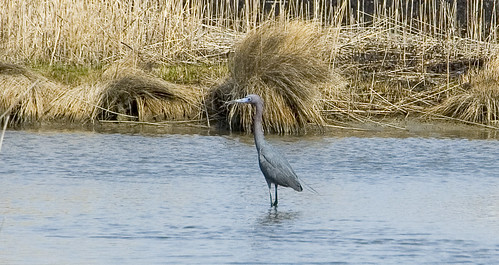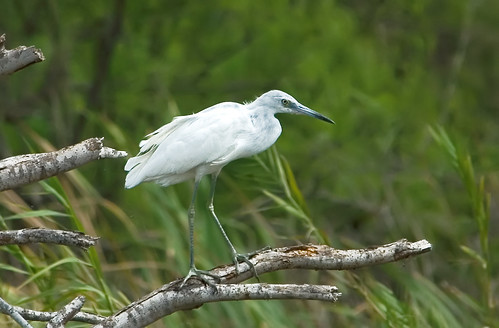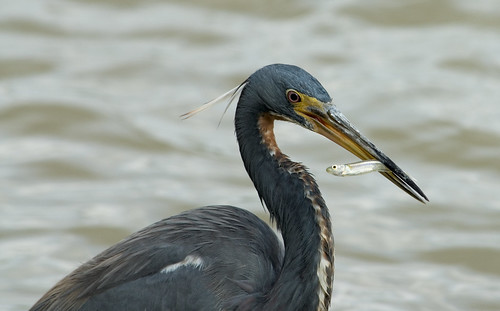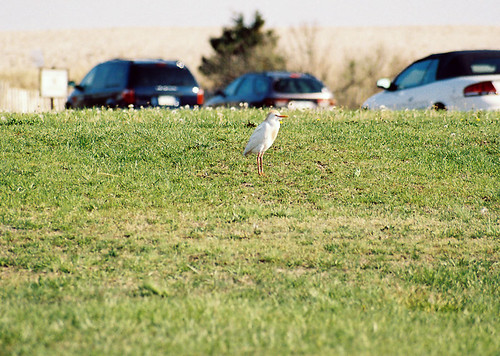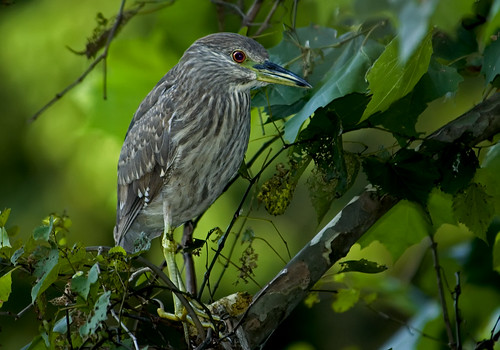BotB V: Herons, Egrets and Bitterns
- Herons, Egrets & Bitterns
- Family: Ardeidae
- # of Heron Species: 4
- # of Night-Heron Species: 2
- # of Egret Species: 4
- # of Bittern Species: 2
- Species Seen / Photographed: 12 / 10
This group of birds are common visitors to most wetlands and watery areas in our country. Their large size and noticeable behavior makes them recognizable to even many non-birders. They run a wide variety of sizes from the smaller white egrets to the larger Great Blue Heron, and a range of habits from the open fishing habits of the GBH to the more secretive lifestyles of both species of bitterns. Similar in form, they represent a mostly common set of feeding habits, focused mostly on fish but taking opportunities for a wide variety of other prey including small mammals, reptiles, amphibians and anything else that gets too close to their large bills.
Herons
The largest of the group, the Great Blue Heron is also one of the most recognized by most early birders. Their large size and dramatic coloration make them extremely noticeable in a variety of habitats, and they are one of the more common of the herons, though the white morph of the species has a more limited range to southern Florida (where I was lucky enough to see a single specimen).
The medium-sized herons – Tricolored Heron and Little Blue Heron – are more common further south, although I have seen them both in NJ.
However, my best opportunity to see both species occurred in Texas – this immature little blue at Laguna Atascosa…
…and an incredibly close-up and personal view of the tricolored at Estero Llano State Park, where Shari and I were treated to a clinic as this heron deftly plucked fish after fish out of the water in front of us.
The more secretive Green Heron is a relatively common bird in our area – but common does not mean very often seen. They manage to blend in with their surroundings – wooded marsh and stream edges – and flush suddenly when disturbed, often giving a birder a quick view as the bird disappears. I’ve been lucky a couple of times to sit and watch them as they slowly walked along a shoreline or branch searching for food.
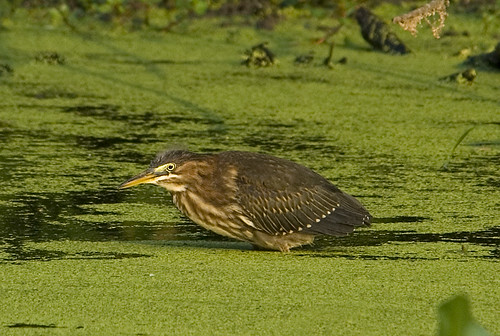
Note: there is also another species of heron – the Western Reef Heron which has been seen several times in the U.S., including in my general area. I’ve never seen one, and since they essentially an accidental species I didn’t include them here.
Egrets
Similar to herons – and in most ways essentially the same except taxonomically – egrets tend to be more primarily white birds with longer plumes during breeding. However, like everything birding this isn’t a hard-and-fast rule – the Reddish Egret has a strong coloration although they do have a white morph. Of the four species of egret in U.S., most of them tend to be on the small side. However, the aptly-named Great Egret is a large white bird with a dramatic yellow bill. I love visiting Forsythe NWR where these birds can run into the dozens and possibly hundreds during breeding season.
Mixed in with the large flocks of great egrets are usually large numbers of Snowy Egrets, relative miniature versions of the former bird. Snowy white – as per their name – they are smaller with black bills and black legs with gaudy yellow feet which give them a comical look. But when seeing them in full breeding plumage with their long plumes, they are a truly beautiful bird.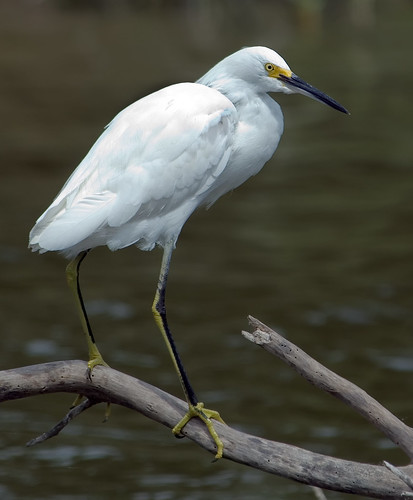
A more rare species is the Cattle Egret, a once-common bird in the NJ area that has become a rarer site – to the point where it usually makes the birding lists when sighted. A less dramatic white than the other two egrets, its brownish breeding plumage creates a unique and interesting outfit. Sadly, while I used to see these all the time as a kid, I’ve only had a couple of chances since I started birding.
The last of the egrets is a species that is rarely seen as far north as New Jersey, but was common during our visit to Texas a few years back – the Reddish Egret. This bird is notable in that it has two very distinct morphs – the colorful purple, mauve and blue dark morph and the snowy white morph. I’ve had a chance to see the dark morph as an adult, but have only been able to see the white morph as an immature bird.
Note: Another accidental bird that has been seen in our area is the Little Egret, which has been seen a few times at nearby Bombay Hook NWR, but I’ve never been able to make there during their short visits. Again, as an accidental it was worth a mention but not listed in my count.
Night-herons
I’m not sure how the night-herons fall into the whole heron group genetically, but since they’re broken out in all of the guides… Both of these species are common in my area, with several roosts located throughout the area – particularly one at the shore near Stone Harbor. The Black-crowned Night-Heron is the more common of the two, seen in many wet and wild spots throughout PA, NJ and DE.
Yellow-crowned Night Herons are less common to see but still semi-plentiful in the area, although I’ve seen more of them in the west and south. Most of the yellow-crowns I’ve seen have been immatures.
Bitterns
The last group of birds in this family are the very secretive and hard-to-spot bitterns Both American and Least Bitterns are found in my area, most often hidden in the high grasses along various bodies of water (mostly ponds and lakes). I’ve seen both species but their secretive nature and the fact that they blend so masterfully into their environment makes them hard to see even when they are right in front of you (to the point where I was literally standing only 2-3′ from one and missed him until someone kindly pointed it out to me).
The American bitterns are common at Forsythe NWR, where they breed and sometimes come out onto the mud flats to feed.
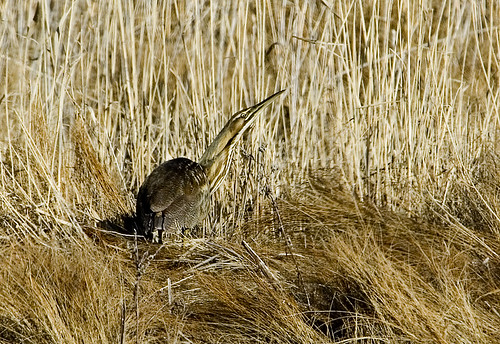
However, my best opportunity was when we found a bittern hanging out by the pond on Jen’s Trail. I’m not sure if the bird was ill or just didn’t care about us, but we were able to get within a few feet of it (I was told that he was there for a few days afterward not looking all that worse for wear so he might have been just very tolerant). It was a great experience, especially for such a hard-to-see bird.
Most of my chances to see the least bittern have also been at Forsythe NWR, although the aforementioned ‘hidden-in-plain-site’ bird was seen at John Heinz NWR. Frustratingly, even though it was so close I was unable to get any pictures so it represents one of the only 2 birds of this group I don’t have a photo record of.

